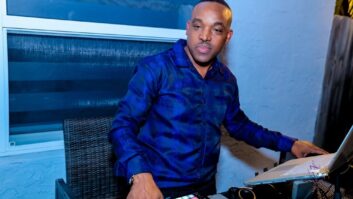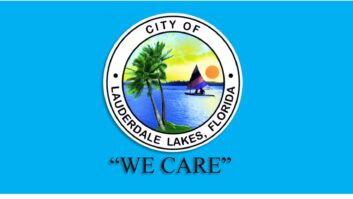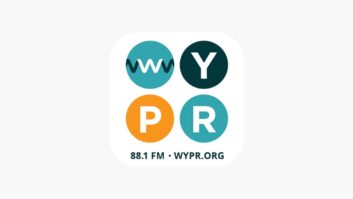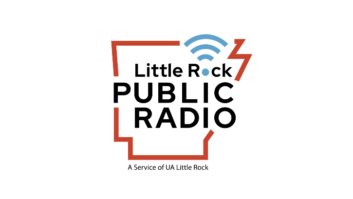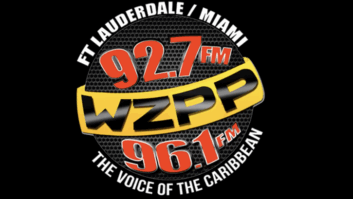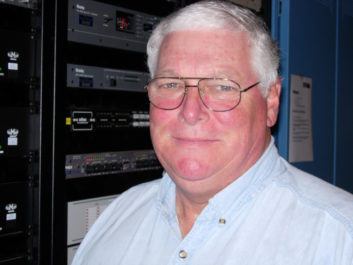
Hurricane season across the Gulf Coast of the United States puts Charlie Wooten on high alert.
Wooten, director of engineering and IT for iHeartMedia in Panama City and Tallahassee, Fla., is also a member of the iHeartMedia Emergency Response Team. He has seen the damage a Category 5 hurricane can do. He stood on the front lines as Hurricane Michael hammered the Florida panhandle in 2018.
That hurricane destroyed the three-tower AM array of WDIZ(AM) and knocked down the STL tower at the iHeart studios in Panama City. Only backup underground fiber circuits kept WPAP(FM) and WFSY(FM) on the air, Wooten said. Two other FMs in the cluster returned to the air within days utilizing a satellite feed to replace the lost STL.
“The iHeart stations were the only commercial stations on the air for over two weeks,” he said.
In 2019 the Society of Broadcast Engineers honored Wooten as the recipient of its Robert W. Flanders Engineer of the Year Award, citing his actions around the storm. “Because of Charlie’s experience, planning and system redundancy, the citizens of Bay County tuned in their radios the morning after the storm and found iHeartMedia signals live. Locals had access to critical information regarding, food, water and emergency health care.”
[Read: Jack DeWitt: An Engineer’s Engineer]
Wooten has had a wide-ranging and award-winning career. He has served as chief engineer for a radio station in Aruba, worked as general manager of a public radio station in Florida, and had a hand in building more than 120 broadcast facilities (RF and studio plants), including 30 in Eastern Europe while working as a broadcast engineering consultant early in his career.
The battle-tested technologist is 72 and has no plans to retire. Our interview with him is part of our series of profiles of leading industry engineers.
Radio World: Describe the scope of your job with iHeartMedia.
Charlie Wooten: I am responsible for all engineering, audio, RF and IT for the iHeart stations in Tallahassee and Panama City, Fla., which totals nine full-power FMs, four FM translators and one AM. We have HD on one station in each market.
RW: What is the biggest day-to-day challenge?
Wooten: Balancing my work priorities between two clusters 100 miles apart.
RW: What technology projects are you working on, and what’s next on the docket?
Wooten: iHeart is currently installing a software-defined WAN system to interconnect all transmitter sites and studios. This system uses two different paths, conventional wired internet and wireless internet, so that if one path fails, the system will seamlessly switch over to the other connection.
After this is installed, we will be moving to a playout system called Sound+, which will have playout equipment installed locally to retain redundancy and reliability. It is an ambitious project and requires many different programming elements be incorporated into the Sound+ platform.
RW: Are you moving more operations into the cloud, or planning to?
Wooten: Yes, we are leveraging cloud architecture, like most industries, but we are also leveraging local playout systems to improve redundancy and reliability.
RW: What are the primary challenges facing local radio engineering?
Wooten: Radio has dramatically changed in the past few years, so it’s important to continue to evolve and reach your audiences everywhere they are and how they want it.
RW: What types of hurricane preparation and planning have your Florida radio stations put in place?
Wooten: We have always had a hurricane plan locally since I came to work with the cluster in Panama City in 1997. We have continued to fine-tune that plan over the years. The plan worked out very well for us for all of the storms, although Hurricane Michael was a completely different animal and we had some new challenges we had to work through. Even with these challenges, iHeartMedia stations were able to continue delivering emergency information shortly after the storm.
RW: What critical infrastructure was most fragile when Hurricane Michael hit?
Wooten: Of all things, we had a battery problem with the generator, which had been tested with no problems on the Sunday before the hurricane hit on Wednesday. We were able to jump off the generator and get power back to the studio building.
All of the transmitter sites stayed on the air during the storm. They just didn’t have any audio. As soon as we were able to crank the generator and get power back on at the studio, WPAP and WFSY had audio, only because we have AT&T underground fiber that ran 100% underground from the studio to the local central office and from the central office, to the tower site 25 miles north of Panama City.
We lost part of the roof and building fascia to the offices, but the area where the studios and rack room were located did not suffer any damage. Luckily the STL tower fell away from our building. We were without commercial power at our studios for over a week and we are located 200 yards from a major substation. Our four FM transmitter sites stayed on generator power for over two weeks.
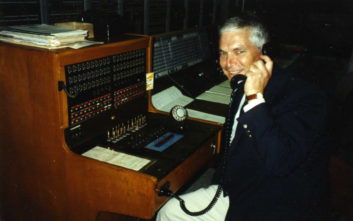
We had diesel fuel delivered to each site each morning and we actually took stations off for short periods at midnight to do oil and filter changes, which are required to insure reliable service.
Our Onan diesel generators operated flawlessly. One piece of flying debris put a small hole in the radiator of the WEBZ generator, but we were able to patch it until a replacement radiator could be located and installed.
RW: What aspects of your job have changed the most through the years?
Wooten: I have been a broadcast engineer since 1970, and the biggest change is the addition of IT to the engineer’s duties. This required me to learn about something I had not really kept up with in the ’80s as it became more prevalent in the ’90s and today.
IT is another aspect of broadcast engineering that is just as important as knowing how to change a tube in a transmitter or build a studio.
RW: What is your perspective on trends relevant to technical radio management?
Wooten: I think the more important question is, how will broadcasters find good people who want to be on their engineering staffs — making sure to have competitive benefits and salaries.
RW: How can the industry identify and develop new engineering talent?
Wooten: Frankly, I have been disappointed in some broadcasters who are not looking ahead and seem to think that engineering is becoming less and less important. While keeping the total station on the air, which today not only includes the transmitter, it also includes the internet stream and other digital means of delivery.
Finding and being able to retain the next generation of engineers should be one of the top priorities of broadcasters. Again, competitive benefits are a key part of attracting and retaining new engineers.
RW: Can you describe the regional structure? Do you have local help?
Wooten: I am part of what is called Region 16, which includes stations in the Florida Panhandle; Mobile, Ala.; Biloxi, Jackson and Hattiesburg, Miss.; and New Orleans and Baton Rouge, La.
I report to a regional lead engineer and we all roll up to a regional senior VP of engineering. As far as the structure of the local engineering department, that would be only me, but I can also leverage other engineers in the region if needed.
RW: What impact has the elimination of the main studio rule had on your technical approach?
Wooten: That has had no change in our local operation. We continue to operate as we had before the rule change.
RW: Are you using HD Radio?
Wooten: In both Panama City and Tallahassee, we have one HD station with HD2 signals that feed translators.
RW: How can radio manage to maintain and grow its presence in the evolving car dashboard?
Wooten: Radio continues to dominate consumer listening in the U.S. with nine out 10 Americans listening. Even though there’s an increasing amount of apps available in the dash, including iHeartRadio, research shows that drivers overwhelmingly still want the ease of AM/FM radio and the simplicity that comes with just pushing a button on their dial.
iHeart is a key player in both AM/FM broadcast radio and in digital, and while we continue to work with all major OEMs and aftermarket head units to make sure the iHeartRadio app is available in dash, that needs to be in addition to AM/FM radio in the dash, not instead of.
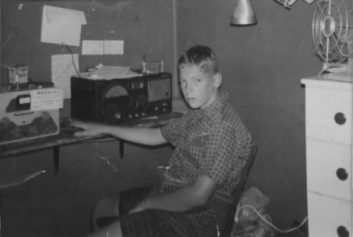
RW: How much longer do you plan to work?
Wooten: Honestly I have not set a date for retirement. I am still physically able to work, although I am not as agile as I used to be. My wife will not retire for several more years, and I plan to continue to work at least until she retires.
RW: What has been the highlight of your career so far? And what other interests do you have?
Wooten: My international work in Eastern Europe as a contractor for the State Department from 1991 to 1997 after the fall of the Iron Curtain. I built a bunch of small community stations in the former Czechoslovakia and a station in Zagreb, Croatia. A lot of my friends don’t even know about this part of my career.
I have two hobbies, ham radio — call sign NF4A. I have been a ham since 1962 when I was 12. I also love to deer hunt. I am president of the Bear Creek Hunting Club, which has 15,000 acres leased in the Florida Panhandle.


